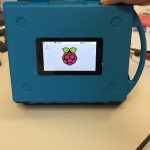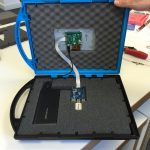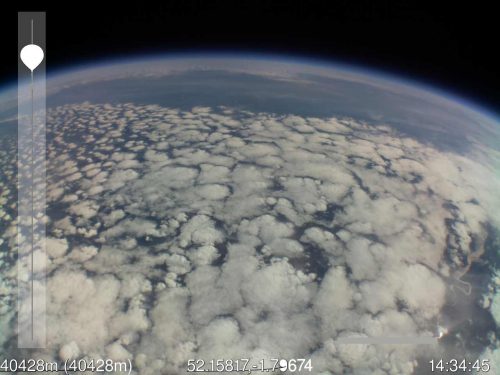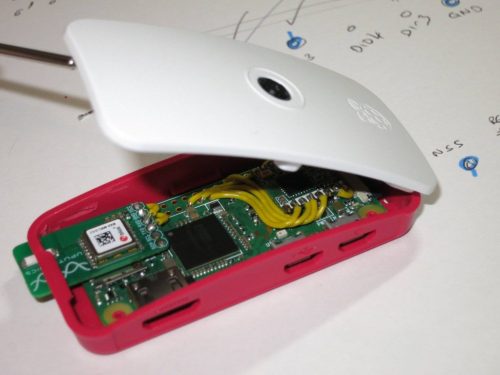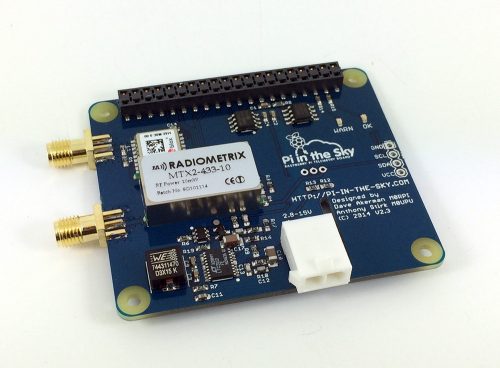Right now, we’re working on an online project pathway to support you with all your high-altitude balloon (HAB) flight activities, whether you run them with students or as a hobby. We’ll release the resources later in the year, but in the meantime we have some exciting new HAB software to share with you!
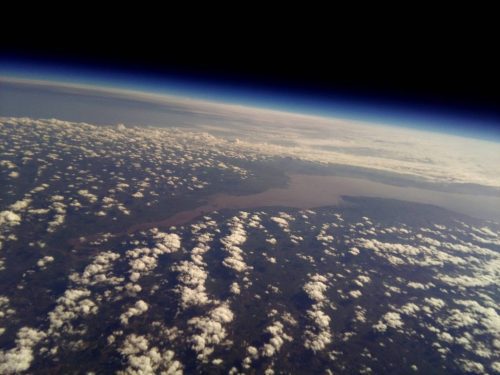
Skycademy and early HAB software
Over the past few years, I’ve been lucky enough to conduct several high-altitude balloon (HAB) flights and to help educators who wanted to do HAB projects with learners. In the Foundation’s Skycademy programme, supported by UKHAS members, in particular Dave Akerman, we’ve trained more than 50 teachers to successfully launch near-space missions with their students.
Whenever I advise people who are planning a HAB mission, I tell them that the separate elements actually aren’t that complicated. The difficulty lies in juggling them all at the same time to successfully launch, track, and recover your balloon.
Over the years, some excellent tools and software packages have been developed to help with HAB launches. Dave Akerman’s Pi In The Sky (PITS) software gave beginners the chance to control their first payloads: you enter your own specs into a configuration file, and the software, written in C, handles the rest. Dave’s Long Range (LoRa) gateway software then tracks the payload, receiving balloon data and plotting the flight’s trajectory on a real-time map.

Dave at a Skycademy event
These tools, while useful, present two challenges to the novice HAB enthusiast:
- Exposing and adapting the workings of the software is challenging for novice learners, given that it is written in C
- The existing tracking software and tools are fragmented: one application received LoRa signals; another received radioteletype (RTTY) data; photos were received and had to be manually opened elsewhere; and so on
Introducing Pytrack and SkyGate
Making ballooning as accessible as possible is something we’ve been keen to do since we first got involved in 2015. So I’m delighted to reveal that over the past year, we’ve worked with Dave to produce two new applications to support HAB activities!
Pytrack
Pytrack is a Python implementation of Dave’s original PITS software, and it offers several advantages:
- Learners can create their own tracker in a simpler programming language, rather than simply configuring the existing software
- The core mechanics of the tracker are exposed for the learner to understand, but complex details are abstracted away
- Learners can integrate the technology with standard Python libraries and existing projects
- Pytrack is modular, allowing learners to experiment with underlying radio components
SkyGate
After our last Skycademy event, I started to look for a way to make tracking a payload in flight easier. For Skycademy, we made a hacky tracking box using a Pi, a 7” screen, and a very rough GUI app that I wrote in a hurry lovingly toiled over.
Since then, we have gone on to develop SkyGate, a complete tracking application which runs on a Pi and fits nicely on a 7” screen. It brings together all the tracking functionalities into one intuitive application:
- Live tunable LoRa reception and decoding
- Live tunable RTTY reception and decoding (with compatible USB SDR)
- Image reception and previewing
- GPS tracking to report your location (when using compatible GPS USB dongle)
- Data, images, and GPS upload functionality to HabHub tracking site
- An Overview tab presenting a high-level summary and bearing to payload
- Full customisation via the Settings tab
You can get involved!
We would love HAB enthusiasts to test and experiment with both Pytrack and SkyGate, and to give us feedback. Your input will really help us to write the full guide that we’ll release later this year.
To get started, install both programmes using your command prompt/terminal.
For your payload, run:
sudo apt update sudo apt install python3-pytrack
And your receiver, run:
sudo apt update sudo apt install skygate
Follow this guide to start using Pytrack, and read this overview on SkyGate and what you’ll need for a tracking box. To give us your feedback, please raise issues on the respective GitHub repos: for Pytrack here, and for SkyGate here.
We’ve developed these software packages to make launching and tracking a HAB payload easier and more flexible, and we hope you’ll think we’ve succeeded.
Happy ballooning!
Disclaimer: each country has its own laws regarding HAB launches and radio transmissions in their airspace. Before you attempt to carry out your own HAB flight, you need to ensure you have permission and are complying with all local laws.
Website: LINK
